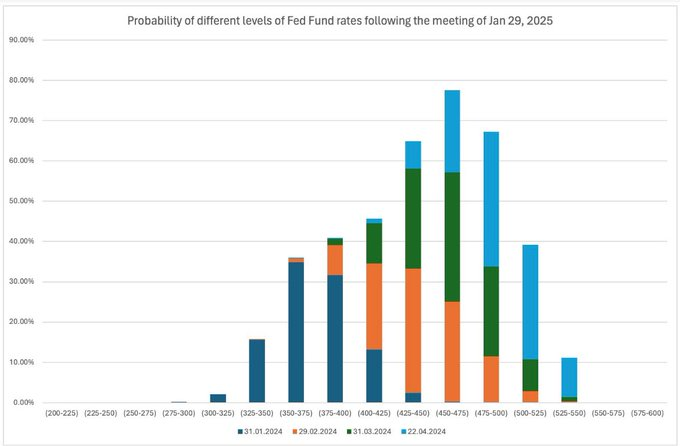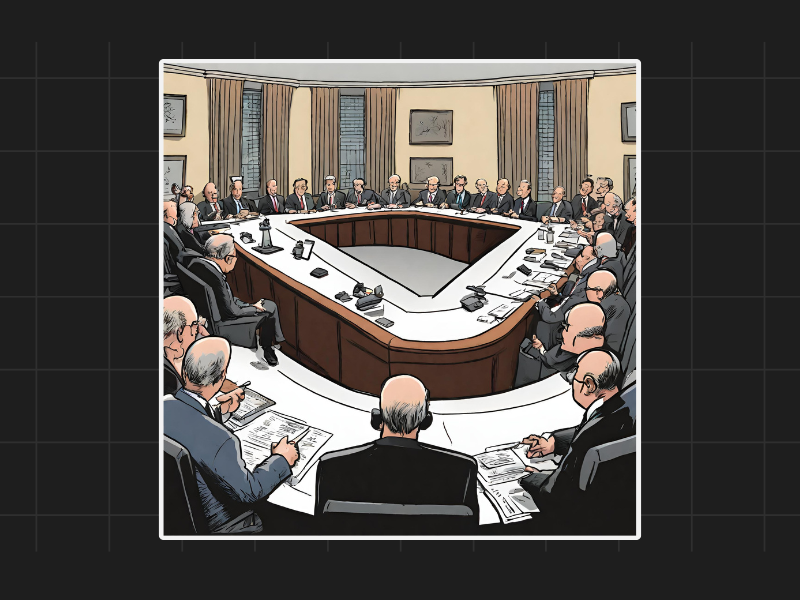The Illusion of Forecasting
Forecasting in financial markets often leads to more confusion than clarity. A simple glance at the probability of Fed funds rate over time reveals the futility of such predictions. In just three months, the projected interest rate for the next year shifted dramatically, highlighting the unpredictability of market forecasts.

Shifting Goalposts
With each new meeting and economic update, the forecast for future interest rates undergoes significant revisions. What was once projected to be between 3.5 to 4% in January shifted to 4.75 to 5.25% by April. These constant adjustments create a moving target for investors, making it challenging to base decisions on such forecasts.
The Fallacy of Predictions
Despite widespread speculation, predicting interest rate movements remains an uncertain endeavor. The recent trend towards forecasting interest rate cuts may face a reality check as inflationary pressures persist. Such discrepancies between expectations and reality underscore the inherent flaws in market predictions.
The Influence of Recency Bias
Economic forecasts often rely on recent data and events, leading to what is known as recency bias. Economists and analysts base their predictions on the most recent trends, which may not accurately reflect long-term market dynamics. This reliance on short-term indicators contributes to the volatility of market forecasts.
Similarly, stock predictions based on earnings growth and targets are fraught with uncertainty. If experts struggle to predict interest rates, forecasting stock performance becomes even more challenging. The foundation of market dynamics, influenced by interest rates, remains a moving target, further complicating predictions.

Disclaimers and disclosures : https://tinyurl.com/2763eyaz
If you have any questions, please write to support@weekendinvesting.com









